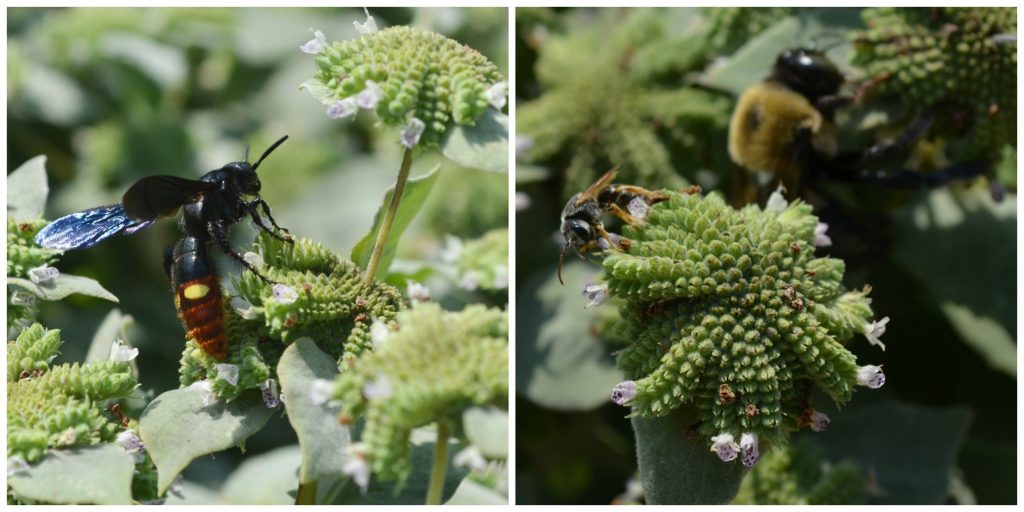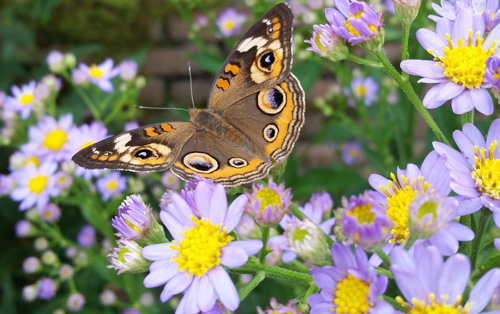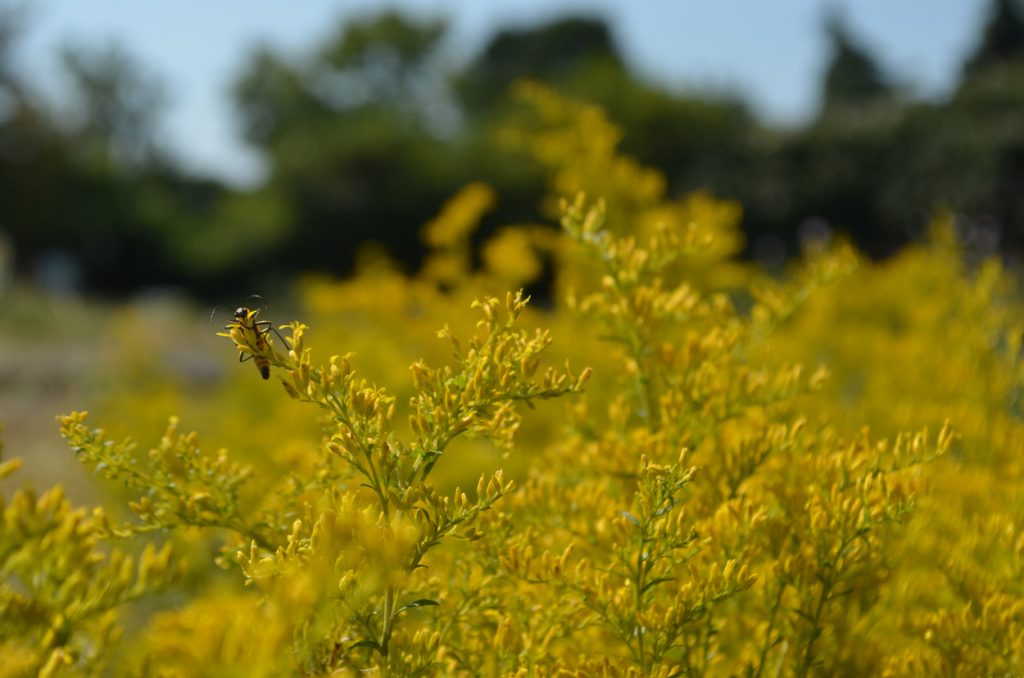Planting for Pollinators
Something serendipitous happens when a bee or a beetle, a bird, a bat or a butterfly rummages through the bright bloom of a flower in search of food. Lured by the promise of nourishing nectar, these tiny creatures unwittingly brush pollen from anther to stigma, prompting the plant to set seed and reproduce. We call it pollination, this inadvertent exchange of food for fertilization. Of the plants that we grow for food, 80% require pollination. Pollinators are key in conceiving many of the wild plants that produce oxygen, prevent soil erosion, purify rainwater and return moisture to the atmosphere, sustaining much of life on earth. Mighty consequences for an animal or an insect with an appetite.
Planting for Pollinators
You can support these miniature miracle workers by planting pollinator habitats in your home garden. Celia Vuocolo, Wildlife Habitat and Stewardship Specialist at Piedmont Environmental Council, recently shared her ideas for creating a pollinator-friendly landscape in a presentation called Plight of the Pollinator: How to Support Pollinating Insects, part of the Grow Native webinar series presented by Lewis Ginter Botanical Garden and the Plant Virginia Natives partnership:
1. Grow plants that are native to Virginia. Native plants have evolved in symbiotic relationships with local wildlife. They offer nourishment and shelter in exchange for life-sustaining services like pollination or seed dispersal. You can help recreate these reciprocal relationships by growing the plants for pollinators that developed naturally in Central Virginia.
2. Be a messy gardener. Leave your leaves on the ground through the winter. Allow dried flower heads to stay standing. Let the grass in certain areas grow tall and go to seed. Build a brush pile of fallen branches and leave dead trees (called snags) upright to decompose naturally. Uncared-for spaces create habitat for resident wildlife.
3. Offer an array of shape, color and height. Adult butterflies prefer to feed in the sun on flat, open-faced blossoms that function as landing platforms. Bees are drawn to flowers like clematis whose stamens stand above a cluster of petals. Tubular-shaped blooms are attractive to hummingbirds with their long, slender tongues while clustered flower heads appeal to smaller or solitary pollinators. “Tweaking each of these elements in your garden to support the species you are managing for is the key to habitat management,” Vuovolo explains.
4. Provide a continuous supply of nutrition and cover throughout the growing season. Plant a variety of vegetation that blooms from early spring through late fall. The Xerces Society publishes a list of plants for pollinators (PDF) for the mid-Atlantic region to help gardeners plan for overlapping or sequential bloom cycles.
5. Grow the native trees and shrubs that are Mother Nature’s nurseries. Female butterflies and moths lay their eggs on species-specific host plants, the hungry hatchlings feeding on the leaves and stems that satisfy their particular nutritional requirements. The National Wildlife Federation has a great resource of native plants ranked by the number of butterfly and moth species that they host. Many of them are trees and shrubs and should be an important part of any pollinator garden.
6. Support the specialists. A pollinator that evolves in a symbiotic relationship with a specific plant species is called a specialist. Specialist bees, for instance, forage for pollen that can only be found in a particular plant species, emerging from their nests each year at the same time their host plant breaks into bloom. Support these discriminating diners by catering to their plant preferences in your garden.
7. Plant cultivars with caution. Because they are selectively bred for certain characteristics like shape or color, cultivars can be unrecognizable to pollinators. Or, they may not provide the same nutritional benefits as a straight species does. Better to grow species that have evolved naturally.
8. Invite an array of pollinators. Plants like goldenrod (Solidago speciosa), blunt mountain mint (Pycnanthemum muticum), and Symphyotrichum asters teem with bees, butterflies and moths. Vuovolo calls them “party plants” for their popular appeal. Make the most of a small space by growing plants that attract a wide array of pollinators. Planting for pollinators is easy if you choose from these three plants!

Plants for pollinators like this mountain mint (Pycnanthemum muticum) are great for the ecosystem and attract many wasps, bees and other pollinators.
9. Just add water. In the absence of a pond or a stream, incorporate a birdbath or wading pool in your residential landscape. Even a small container of water placed out in the open will do. Just be sure to change the water 2-3 times per week when mosquitoes are breeding. Leave puddles standing after a storm to satisfy insects’ need for nutrients found in rotting plant matter and mud.
10. Look beyond the boundaries. “Wildlife doesn’t see property lines,” Vuovolo reminds us. “Neither should you.” Instead, think of your neighborhood as a single functioning unit with all of its different plant communities and surfaces working in concert to support local wildlife. “Lump your neighborhood into sections that reflect particular geology, hydrology and light conditions,” she suggests. “Open areas for foraging in summer, forested islands for nesting in winter and floral resources for food in spring are all useful, depending on the seasonal needs associated with the lifecycle stage.”
National Pollinator Week
We are always planting for pollinators at Lewis Ginter Botanical Garden! In celebration of National Pollinator Week, June 21-27, 2021, we’re having a weeklong celebration of our important pollinators — bees, butterflies, birds, bats, and beetles — and the plants that support them. In addition to the special events like a free webinar on Monarch Butterflies with Q&A, don’t miss a visit to Secret Lives of Bugs and stop by the Bob Stapleton and Keith Tignor Apiary to see the bees! We hope you leave inspired to do your small part to support a pollinator-friendly ecosystem. Join us in celebrating Virginia’s tiniest home-grown heroes by offering hospitable habitat for them in your own backyard. If you plant it, they will come.
Pollinator Week
June 21-27, 2021

